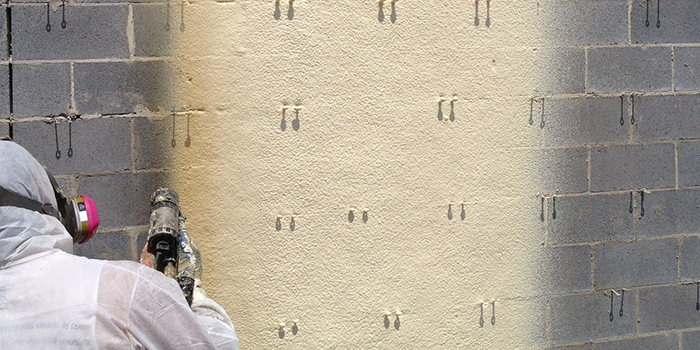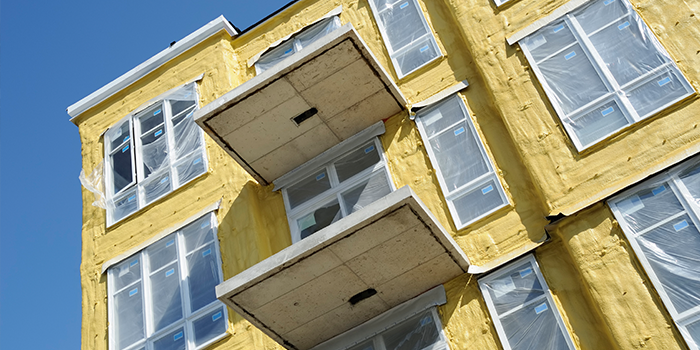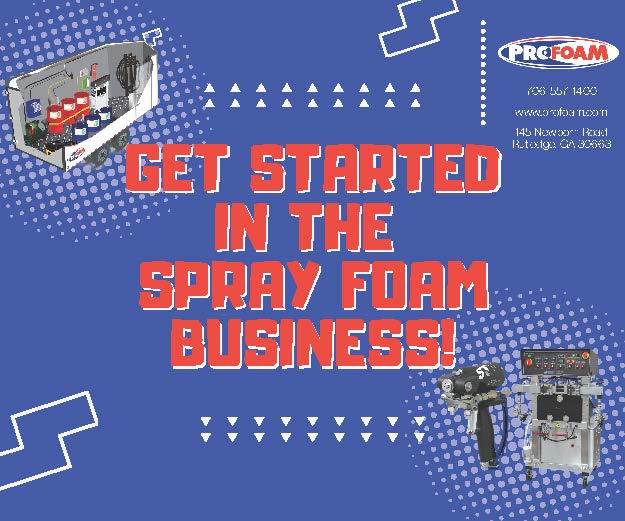
Commercial Air Barriers

Back to Education Center | Architect's Guide | Building Envelopes and SPF
Air Barriers for Commercial Buildings
Air barriers control the movement of air into and out of a building to protect it from the adverse effects of air leakage and infiltration. These effects can not only reduce the lifespan of a building, but also contribute to excessive energy consumption and high utility bills, as well as poor air quality and occupant discomfort.
Air Barrier Systems
Air barrier systems are made up of a number of materials that are assembled together to provide a complete and total barrier that essentially wraps the building envelope, which generally includes all walls, roofs, and floors of the building. A properly functioning air barrier system provides a barrier against both the air leakage and infiltration. In controlling the infiltration of outside air into a building, air barrier systems also prevent pollutants and other airborne contaminants from compromising the quality of indoor air. Furthermore, air barriers can also prevent the infiltration of water vapor, which can condensate to form liquid water that is a key ingredient to corrosion and the potential development of mold.
Spray foam offers a fully adhered, seamless, monolithic air barrier that conforms to virtually any substrate and allows easy detailing around penetrations such as pipes, windows, doors, and sheathing fasteners. SPF air barriers contribute to improved building durability, energy efficiency, and to the comfort, health and safety of building occupants. Furthermore, SPF provides the highest level of thermal insulation (R-value) and a monolithic moisture barrier. Its spray applied installation process speeds construction and reduces labor costs substantially.
Alternative air barrier systems that incorporate sheet materials require a great deal more labor for installation. Sheet materials do not possess the insulation characteristics and are often susceptible to tears, as well as air leaks due to their reliance on proper seaming and adhesion to the building’s façade.
An air barrier assembly is a collection of air barrier materials and components assembled together in a specific manner. For instance, an air barrier wall assembly would include the main air barrier material and then use additional materials and components to join the air barrier materials together. The performance of the entire air barrier assembly is hinges on not just the permeance (the amount of air that passes through the material) of the main air barrier material, but also the supplementary components working together.

The Case for Air Barriers
Conditioned air has perhaps the most significant influence on occupant comfort within a building. In summer or in warm climates, we normally cool and dehumidify the air to a lower temperature and humidity than the exterior environment. Conversely, in winter or cool climates, we normally heat and humidify the air to a higher temperature and humidity than the exterior. When conditioned air leaks out of a building, and/or unconditioned air infiltrates a building, additional energy is consumed to recondition the remaining air. Air leakage and infiltration account for 25%-40% of heating and cooling costs, per Energy Star, so buildings with properly installed air barriers can stand to benefit from substantial savings in operating costs. Furthermore, buildings that have a properly installed air barrier system can operate with smaller HVAC systems, since they do not have to compensate for a leaky building. It’s not out of the question that the reduction in mechanical equipment size and cost could offset the cost of the air barrier system.
Air Barrier Testing
The testing of an air barrier assembly for air leakage is done in accordance with ASTM E2357. The results will include the air permeance of the main material and the components, as well as the air leakage that results from joining all the pieces together.






